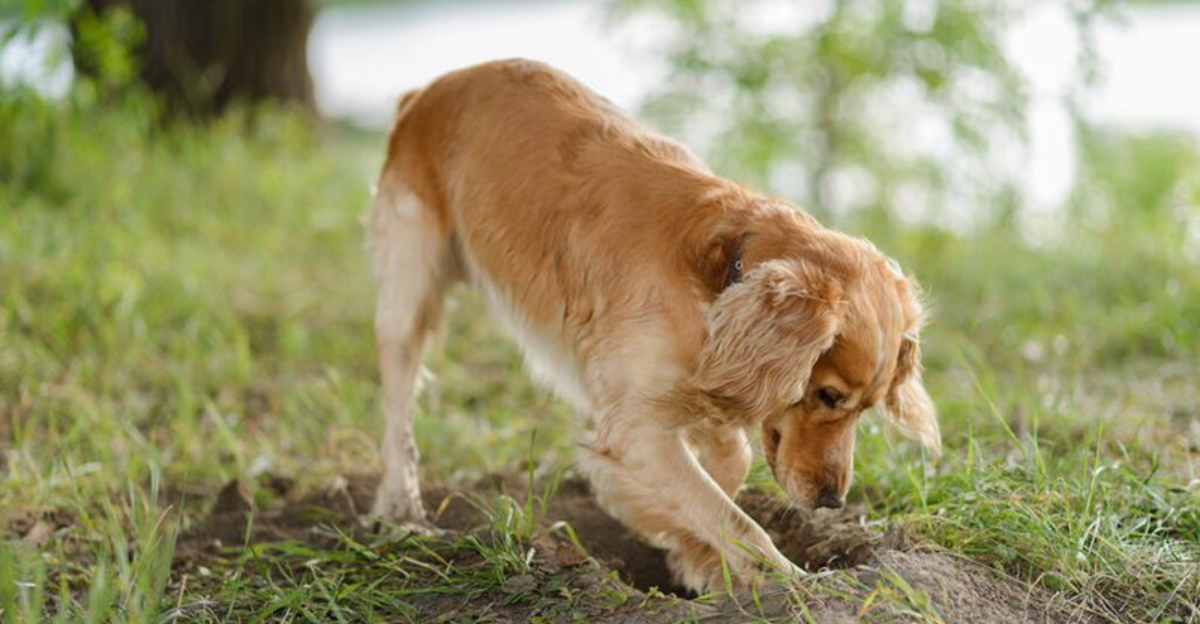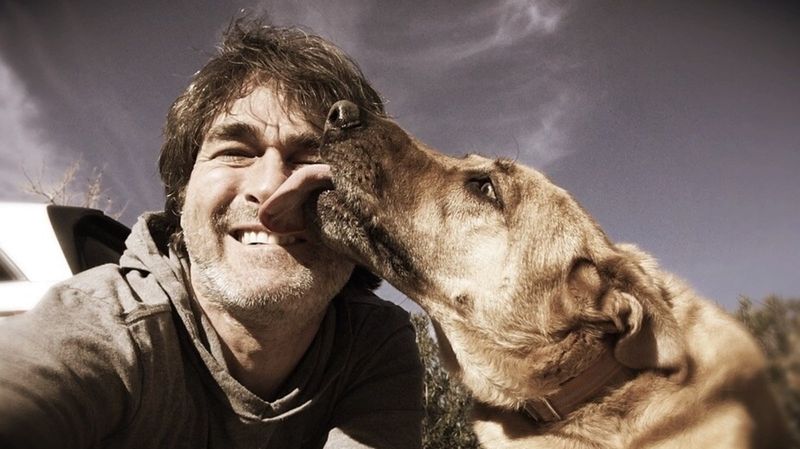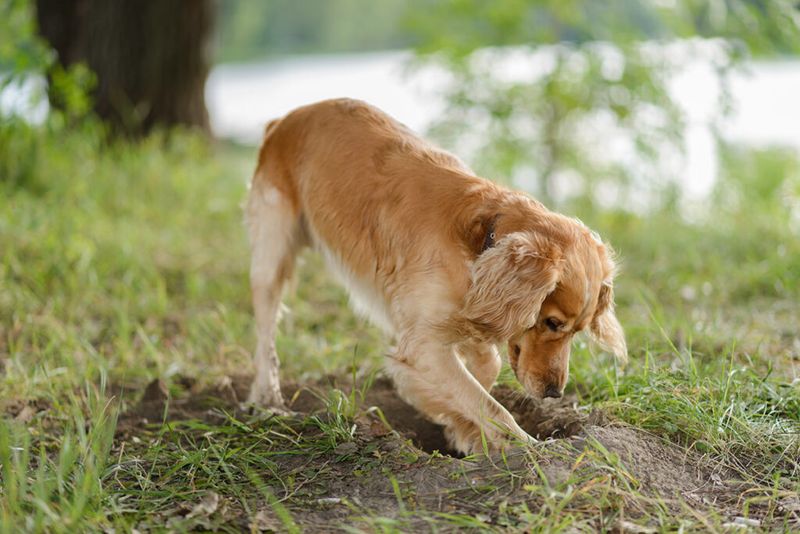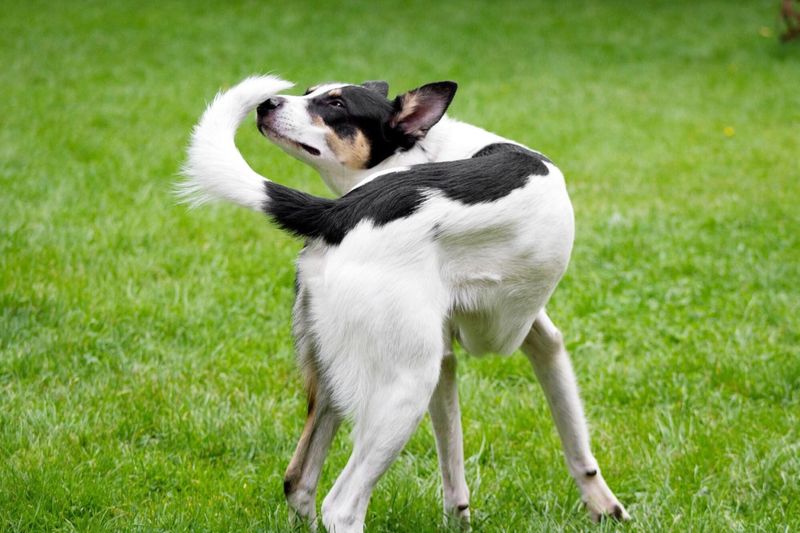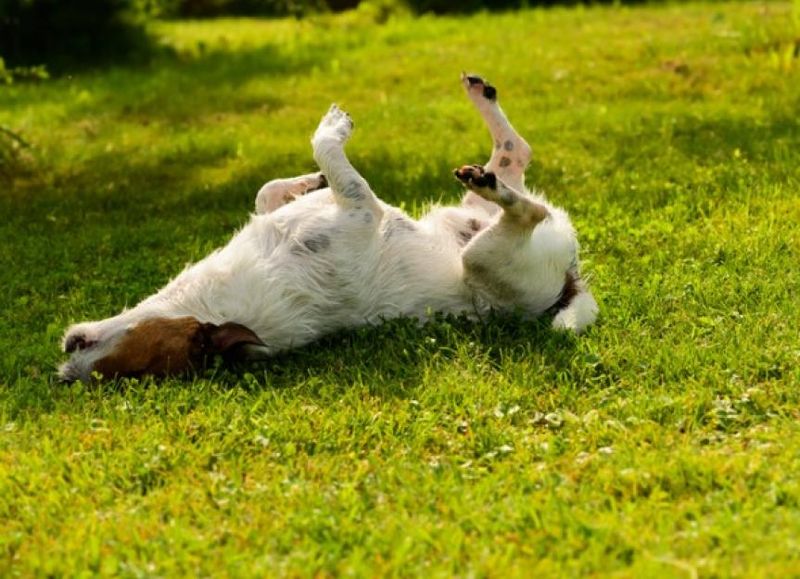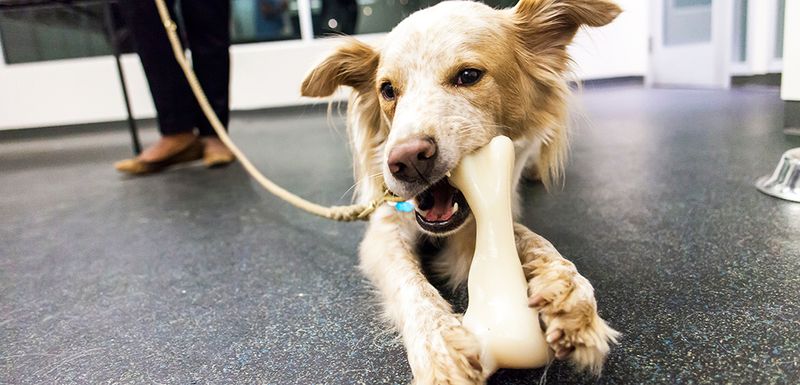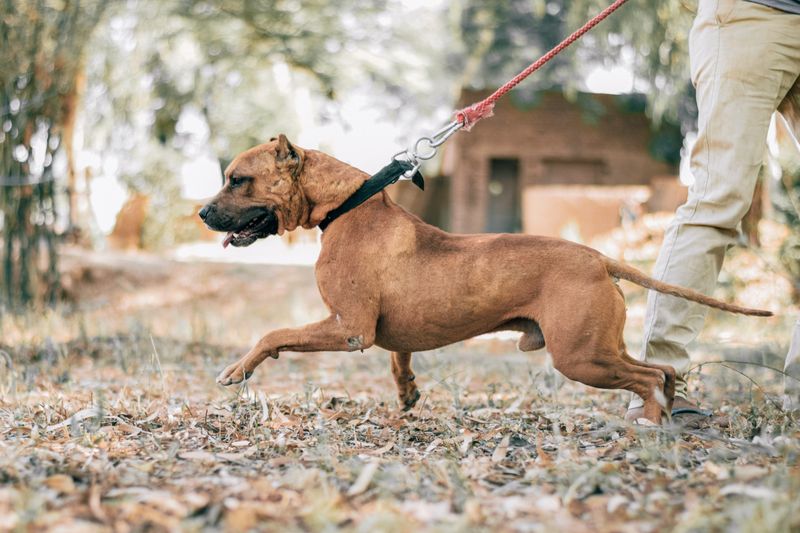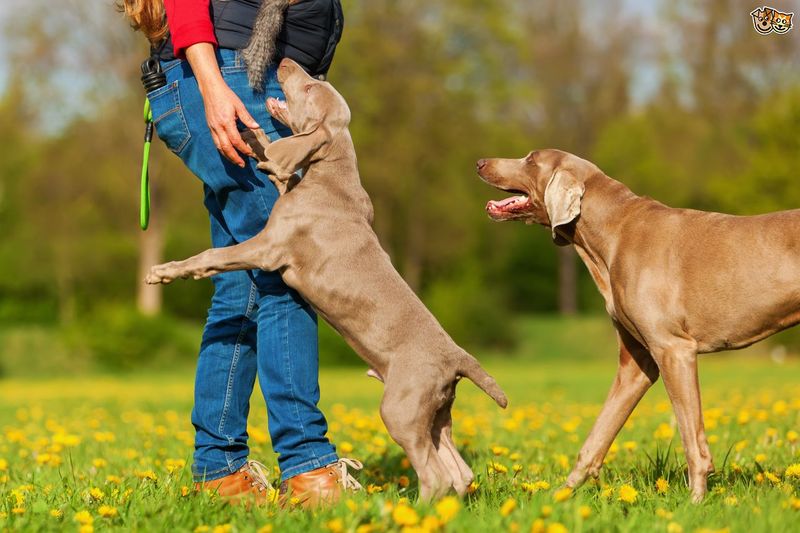Dogs are known to be man’s best friend, yet some of their behaviors are often misunderstood. From wagging tails to barking at strangers, every action has its reason. Understanding these behaviors can enhance the bond between humans and their canine companions. Experts shed light on 13 common dog behaviors, revealing the true reasons behind them.
The Tail Wag
A wagging tail usually indicates a happy pup, but not always. The tail’s position and speed can offer insight into a dog’s emotions. For instance, a high, stiff wag might suggest alertness or agitation, while a slow wag with a relaxed posture often represents friendliness.
Understanding tail signals can help pet owners discern if their dog is comfortable or stressed. Misinterpreting these cues can lead to confusion.
Next time you see a wagging tail, take a moment to observe the context and other body language signals.
Licking Faces
Many assume dogs lick faces as a sign of affection, but there is more to it. Puppies lick their mother’s mouth to prompt regurgitation of food, a survival tactic.
As dogs grow, licking becomes a social gesture, showing respect or submission. For some, it is a way to gather more information about a person through scent.
While a lick might be a form of love, it can also be a dog’s way of exploring its world. Understanding this behavior can improve human-dog interactions.
Barking at Strangers
Barking is a dog’s natural way to communicate, often misunderstood as aggression. When a dog barks at strangers, it might be asserting territory or expressing fear.
Dogs use barking to alert their owners of unfamiliar presence or potential danger. However, excessive barking might indicate anxiety or insufficient socialization.
It’s important to observe the context and body language. Is the dog barking with a playful stance, or are the ears pinned back? These clues can help decipher the true intent behind the noise.
Digging Holes
Digging is more than a destructive habit; it’s a natural instinct. Dogs dig to create a cool spot to rest or to hide valued possessions.
Certain breeds, like terriers, have a stronger urge to dig due to their hunting background.
Understanding the drive behind digging can help manage this behavior. Providing designated digging areas or engaging toys can satisfy a dog’s urge without ruining your garden. Recognizing this behavior as instinctual rather than mischievous can enhance pet-owner harmony.
Chasing Tails
Tail chasing is often seen as a playful act, but it can indicate various things. Puppies chase tails as a form of entertainment or to expend energy.
In adult dogs, it might suggest boredom, stress, or even a medical issue like fleas or skin irritation.
While a spinning pup can be amusing, if the behavior becomes obsessive, it might require professional attention. Encouraging exercise and mental stimulation can reduce tail-chasing episodes, ensuring your dog remains both happy and healthy.
Rolling in Smelly Things
Ever wonder why dogs love to roll in smelly stuff? This peculiar behavior has roots in their ancestry. Wild dogs and wolves roll in strong smells to mask their scent, aiding in hunting.
For domestic dogs, it’s a way to communicate their ‘find’ to others or simply enjoy an interesting scent.
Though this can be frustrating, especially after a bath, understanding the natural history behind this behavior can foster patience. Consider redirecting this instinct with scent-based games or toys.
Eating Grass
Grass eating might concern pet owners, but it’s a common canine habit. While some dogs eat grass to induce vomiting, others do it out of boredom or to supplement their diet with fiber.
Occasional grass consumption is generally harmless, though persistent or excessive eating could signal digestive issues.
Providing a balanced diet and engaging activities can reduce this behavior. Listen to your dog’s needs—they might be craving more than just a grassy snack.
Howling
Howling is a throwback to a dog’s wild ancestry, used for communication over long distances. Modern dogs might howl to contact others, express loneliness, or respond to high-pitched sounds.
It’s an instinctual behavior often misunderstood as distress. Understanding the howling context can offer insights into a dog’s emotional state.
Encouraging social interactions and providing companionship can alleviate excessive howling, ensuring your dog’s social needs are met.
Chewing on Objects
Chewing serves various purposes for dogs, from exploring their environment to relieving teething pain in puppies. For adult dogs, it can be a stress reliever or a way to combat boredom.
Ensuring safe chew toys can satisfy this need without damaging household items. Persistent destructive chewing might indicate anxiety or lack of stimulation.
Providing regular exercise and engaging activities can curb this behavior. Understanding it as a natural need rather than a nuisance can foster a more harmonious home.
Leash Pulling
Leash pulling can be frustrating, but it often stems from excitement or lack of training. Dogs pull because they want to explore and reach new sights and smells quickly.
Training with positive reinforcement and using proper equipment can transform walks into enjoyable experiences.
Patience and consistency are key in teaching leash manners. Understanding the dog’s eagerness to explore the world can foster empathy and improve the walking experience for both dog and owner.
Humping
Humping is often mistakenly seen purely as a sexual behavior, yet it can signify dominance, stress, or excitement. Puppies and young dogs might hump during play as a natural part of social development.
Redirecting this behavior through distraction or commands can prevent embarrassment.
Understanding the context of humping helps in managing it without resorting to punishment. Recognizing it as a multi-faceted behavior is key to addressing it appropriately.
Sniffing Everything
With a nose far superior to humans, dogs use scent to understand their world. Sniffing provides dogs with information about other animals, food, and environmental changes.
Allowing a dog to sniff during walks satisfies their curiosity and mental stimulation needs.
Rather than rushing a walk, consider it a chance for your pet to explore. This understanding of sniffing as an essential part of their sensory experience can enhance the bond between owner and dog.
Jumping on People
Jumping is often a dog’s way of greeting, yet it can be problematic. Dogs jump to reach faces and express excitement or affection.
Training with commands and reinforcing calm behavior can reduce jumping incidents.
Understanding this behavior as a form of social interaction can help owners train their dogs effectively. Teaching alternative greetings, such as sitting, nurtures proper manners and improves social harmony. Embracing this natural exuberance with guidance fosters a happier coexistence.
